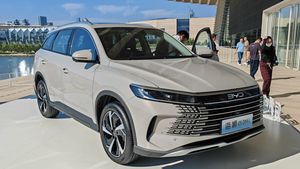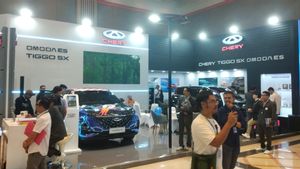JAKARTA - In recent years, the use of components and software from China in the automotive industry in the United States (US) has increased significantly. Various car brands for the 2025 model, from Cadillac from General Motors to Ford, use these components in their vehicles.
Launching Autoweek, September 26, models such as Cadillac XT4, CT4, and CT5, and Buick Encore GX contain 15 percent Chinese components, Hyundai Kona EV in the US has 50 percent content, while the largest Ford Mustang Mach-E with 51 percent level. In fact, some models produced in China, such as Lincoln Nautulus and Polestar 2, contain very high Chinese components, reaching 87 percent and 95 percent.
The increase in the use of Chinese components has raised concerns among the US government. The US Commerce Department is concerned that software and hardware originating from China and Russia could threaten the national security and privacy of US citizens. This is particularly true for autonomous vehicles that are increasingly using connectivity technology.
SEE ALSO:
Ban on the Use of Chinese and Russian Components
To address this issue, the US Department of Commerce has put forward a new rule prohibiting the sale of vehicles with connectivity software from China and Russia from the 2027 model year. In addition, vehicles with relevant hardware from the two countries will also be banned from being sold starting the 2030 model year. This rule aims to prevent possible foreign access to personal data and vehicle controls.
Although this rule aims to protect national security, it is also considered to have many negative impacts on the automotive industry in the US. Many automakers have been dependent on components and software from China and Russia. This ban could disrupt their supply chain and increase production costs.
The English, Chinese, Japanese, Arabic, and French versions are automatically generated by the AI. So there may still be inaccuracies in translating, please always see Indonesian as our main language. (system supported by DigitalSiber.id)
















